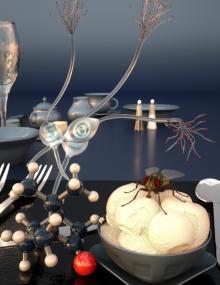Content:
In all animals -- from humans to fruit flies -- coordinated physical movement relies on two regimes of motor control: gross and fine. In humans, gross motor control enables large movements of the body and limbs, such as during walking, running or throwing; fine motor control is necessary for more precise movements -- pressing a specific key while playing a musical instrument, for example.
In fruit flies (Drosophila melanogaster), rhythmic walking depends largely on gross motor proficiency, while fine motor skills are essential for accomplishing more difficult tasks, such traversing large gaps in the terrain, which requires highly orchestrated and precise movements of multiple appendages, all at the same time.
In a new study that focuses on locomotion in the fruit fly -- a relatively simple animal that exhibits many of the same behaviors as humans and other mammals -- UC Santa Barbara's Craig Montell and his research team have identified a transient receptor potential (TRP) channel that plays a key role in the insect's fine motor coordination. Their research is published in the journal Nature Communications.


